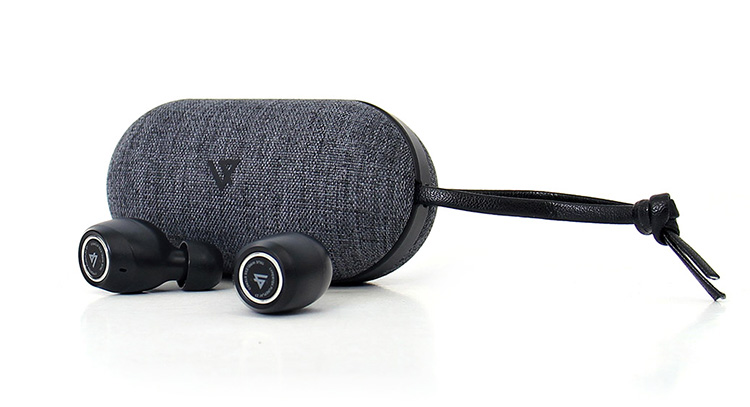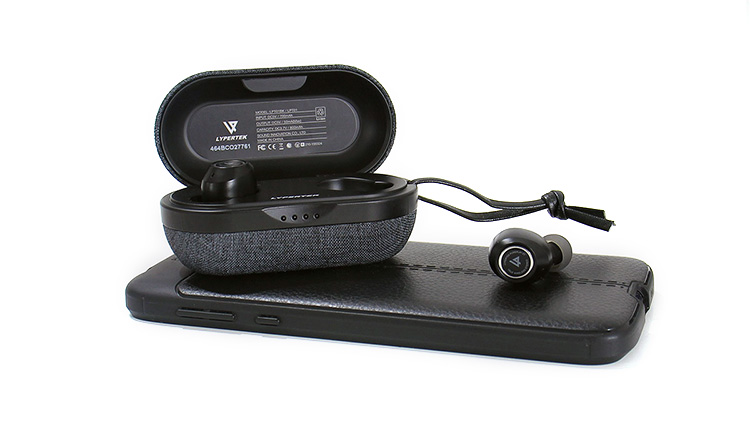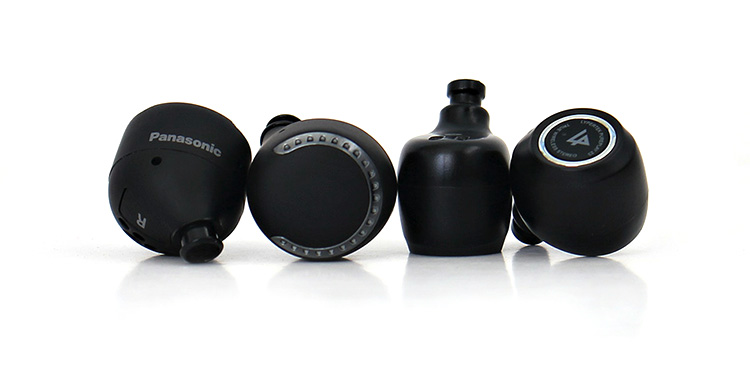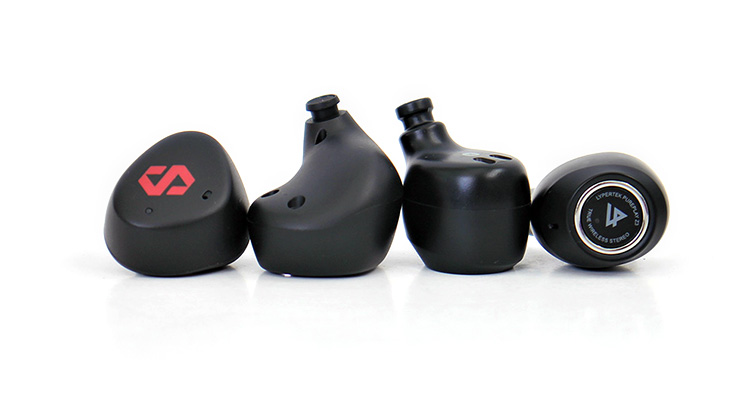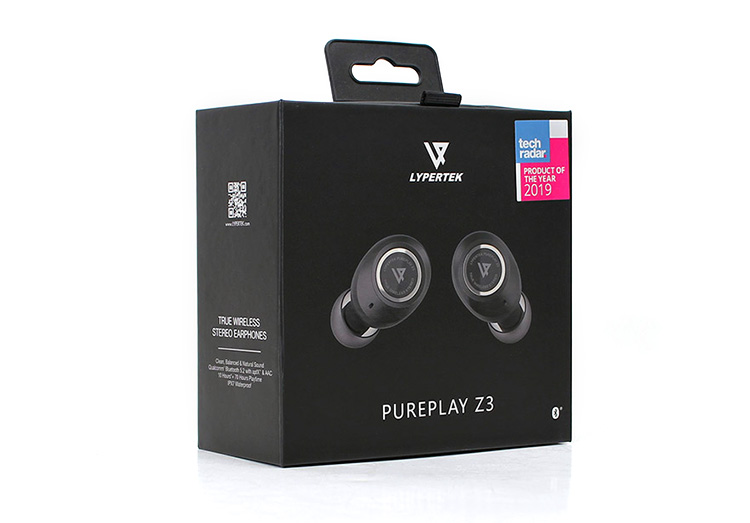Sound Impressions
Summary
I did get a fun-sounding, ever so slightly V-shaped sound with an upward tilt and a good amount of clarity overall from my first listen of the Lypertek PurePlay Z3 2.0 TWS. Frequency extremities seem to be slightly accentuated especially up on top.
Bass response is decent with a few decibels of emphasis midsection but no way would I consider the Lypertek PurePlay Z3 2.0 bass bloomy sounding or consider the bass bloated.
When I ran the tone sweep test the most prominent part of the bass was between 60Hz and 120Hz giving the bass some forwardness except for the lowest frequencies which seem subdued a few decibels and rather flat below 40Hz all the way down to below 20Hz.
Midrange response seems rather flat and evenly represented except for a 3K peak which is to my ears is 5 decibels or more above the rest of the midrange spectrum. The midrange has a good amount of presence, clarity and is fairly well balanced with the rest of the spectrum.
When it comes to high frequencies I found them to have sharpness beyond what some other budget TWS models can produce but there is still a touch of harshness at times and there’s also a hard high-frequency roll-off after 11 kHz.
When I ran the test tone sweep and once I went past 10kHz there was lots of noise and I bet it was the source of harshness. This seems to be inherited from most TWS models I tested with SOC Qualcomm chips. Or perhaps it’s within the codec decoding but I’m no engineer to say for sure.
Timbre
The Lypertek PurePlay Z3 2.0 has a rather pleasant sound signature which is relatively balanced for a budget-priced TWS and an alleviating relief from the usual bass boomers. Lypertek squeezed some decent amount of dynamic range, transient response, and layering from these drivers as well.
I would consider the Z3 2.0 to be non-gender specific and most music sound well. Music like R&B, Hip Hop, Jazz, or rock comes through with a good amount of needed punch and attack.
At one point I popped in some classic rock Bob Seger “Mainstreet” and I was a happy camper. His voice came through with plenty of realism. Male vocal tonally sounds more accurate over female vocals I think due to that 3K peak which actually starts earlier on at around 2.5 kHz.
Female vocals can come in rather sharp at times but there still is some good clarity and best of all some decent layering which helps every element in songs to sound coherent and be distinct.
Staging
TWS technology was intended for convenience over sound quality and mentioning good soundstage in relation to a TWS model is something that was always reserved for good headphones and IEMs and not at all synonymous with TWS tech.
But here we are with the Lypertek PurePlay Z3 2.0 which has a decent sound stage with a touch of width and depth and even some height can be heard.
Yosi Horikawa’s Letter and the chalk writing on the board starts just beyond the left ear and not much beyond that and there seems to be a center spot missing in the imaging but when panning occurs the center is not missing, just recessed at dead center.
The panning was fairly accurate, however. But do not expect much of a center channel phantom effect here. One side note is why would you write a letter on a chalkboard? Good luck at the Post Office.
Layering is more than adequate and instruments do take their own place on the stage but I would not use these to judge imaging on complex recordings for the simple fact that things could get congested especially at high volume levels. They do best with simple music, Pop, Jazz, or 3 and 4 man bands for example.
Wireless Performance
Stability & Range
Since the Lypertek PurePlay steps up to BT 5.2 I really did not expect added range since the difference is with EATT protocols, isochronous channels, and LE power control and 5.2 does not promise a longer range transmission over BT 5.0.
However, the PurePlay Z3 2.0 was able to go up to 42 feet away within a straight visible line from my source and at 43 feet presented intermittence. This is actually very good for a TWS device that uses a low-power BT radio.
Another thing I could say is that the Z3 2.0 never gave me issues with pairing or anything of the sort. They were immediately detected and paired flawlessly with all my devices. I used 2 Android 10 phones, a PC Bluetooth dongle, and a FiiO BTA30 with no issues whatsoever.
Latency
The Lypertek PurePlay Z3 2.0 has a rather peculiar characteristic when you first initiate a song for example. I got a 1-second delay and most times it skipped the first second of that first track. After that point, each song plays from the beginning fine.
What I think is happening here is a standby or sleep mode being active on the SOC when no signal is present and this is done for 2 reasons. First, because that creates dead silence between uses and two, to prevent battery drain if no music is being played.
Latency is the average of 0.2 seconds but I did notice a slight improvement over some sets and perhaps those0 .2 seconds have been reduced to 0.1 seconds on BT 5.2. That’s what it took to perfectly synchronize voice in VLC player for example.
Microphone Performance
The Lypertek PurePlay Z3 2.0 TWS takes advantage of the Qualcomm built-in cVc 8.0 noise reduction system that reduces echo, wind noise and works on a negative feed-forward and feedback system that negates microphone sound quality.
I have tried many TWS in that their microphone systems fail to pick up my voice correctly when I have them set on and I usually have to remove one earbud to talk directly into it and fortunately I did not have to go through that nonsense with the Z3 2.0.
Voice was rather clear and my test subject, my other half said she heard me loud and clear. We reversed roles and I did verify what she said.
I would consider the dual-microphone system inside the PurePlay Z3 2.0 to be above average in clarity and in voice pick-up ability. The cVc system here is well-tuned and gives the end-user decent performance.
Select Comparisons
Panasonic RZ-S500W
$179.00
Design
The Panasonic RZ-S500W TWS is a very robust TWS set packed with features that if you look around hard enough are being offered at a discounted price that bring them into the 100 dollar price club. This set is a bit more upscale in build and features.
Of all the features the RZ-S500W excels in is the 50 step ANC which can be adjusted through the App and activated with a well-worked touch control system plus you get another 50 steps for the ambient sound feature and both systems are very effective. The Technics variant, the AZ70W has a 100 step ANC.
The earbuds themselves are somewhat bulky and large compared to the Z3 2.0 but the case is smaller, however, being smaller the tradeoff is a slightly reduced battery capacity and shorter runtimes compared to the Z3 2.0.
The included accessories vary in the sense that the RZ-S500W includes basically the same amount of ear tips but are all the same style and are just different sizes while the Z3 2.0 gives you a choice to use silicon or foam tips because both types are in the box, just less of each type.
Sound
The Panasonic RZ-S500W also has a single dynamic driver configuration that has a very relaxed sound signature that is very polite and soft mannered more so compared to the Z3 2.0 sound signature which seems to have a more exciting sound signature especially up in the top end.
The bass response seems similar but seems to be slightly loose on the RZ-S500W. Both seem to have a small emphasis in the mid-bass region around the 60Hz to 120Hz region but the Z3 2.0 seems to have a flatter response.
Funny thing is that not only do they share the same boosted bass region but both these TWS models also have a small 3k peak but it’s more prominent in the Z3 2.0 and gives it more presence and forwardness.
High frequencies seem cleaner on the RZ-S500W which could reach 15K while the Z3 2.0 could only reach 11k which after that point produced some noise and introduce a smudge of harshness. The noise can only be heard with a tone generator and a constant tone and is barely perceived in listening tests with music sources.
Performance
Although it has a higher cost, decoding is only done through AAC and SBC and does not offer aptX since the Panasonic TWS uses an Airoha chip and aptX is a Qualcomm codec. So compatibility is higher on the Z3 2.0 because of the inclusion of aptX and improved protocols. Remember, another improvement is the step up to BT 5.2 versus 5.0.
Another area of improvement is in battery life which is better on the Z3 2.0 giving you 8 hours of usage versus approximately 5 on the RZ-S500W.
Microphone performance is about equal although the Panasonic set has more features. Another area that the Z3 2.0 has an edge over the Panasonic is the BT operational range which is longer and can work smoothly further away from the source.
Dyplay ANC Shield Pro
$89.99
Design
At an almost identical retail price comes the Dyplay ANC Shield Pro which has ANC built in but no app. Although the feature is available in this set, I would consider it less effective compared to the 50 steps adjustable ANC found on the Panasonic RZ-S500W.
Construction is similar to the Z3 2.0 with an all-plastic build with LED indicators up on the front of the charging cradle. The earbuds seem slightly bulkier, however. On a positive note, the ANC Shield Pro has a touch control setup which is my favorite and preference over push buttons.
One important caveat, the Dyplay ANC Shield Pro has no waterproof rating so if that is important to you take note. The other two TWS models in this comparison both have an IPX7 rating.
Sound
Both these TWS sets use a single dynamic driver and both have an elevated 60Hz to 120Hz region but it’s more so on the ANC Shield Pro. This set has the steeper V-shaped curve and are the most bass-heavy set in this comparison. These are still listenable because it still restrains itself from being over-exaggerated in the bass region.
One of the areas the Dyplay set excels in is the fact that it can touch 15kHz with very little noise but yet somehow are more polite in high-frequency production compared to the Z3 2.0 which has more presence in the high frequencies.
I would definitely give the win in staging to the Lypertek set because the Dyplay is somewhat narrow in width but with a good amount of depth. The Lypertek produces width, depth, and some height. Layering is also better on the Z3 2.0.
Performance
I think the Lypertek also outperforms the Dyplay in BT operating distance, microphone clarity and vocal reception plus the set has better BT protocols with more codec compatibility since the Dyplay TWS cannot do aptX and is a BT 5.0 device.
Another mention about the Lypertek PurePlay Z3 2.0 is that it’s the set with the loudest volume levels available and is capped at a higher decibel point compared to the Dyplay and the Panasonic TWS.
Our Verdict
In a nutshell, what we have here is the Lypertek TEVI with an updated chip that performs better with more features. So the PurePlay Z3 2.0 is a re-spin of the TEVI, improved but the price stayed the same which is definitely a move in the right direction.
Are there any cons? The Cradle could have been smaller. I think that’s it. Everything else works for me and to conclude, if the TEVI was a good buy then the Lypertek PurePlay Z3 2.0 TWS set is an even better buy. Need I say more?
Lypertek PurePlay Z3 2.0 Specifications
- Driver Configuration: Single Graphene dynamic driver
- Chipset: Qualcomm QCC3040
- Codecs: APTx, AAC, SBC
- BT protocol: 5.2
- Waterproof Rating: IPX7
- Microphone: Dual Microphone with CVC8.0
- Charging: USB-C, Wireless fast charging compatible





